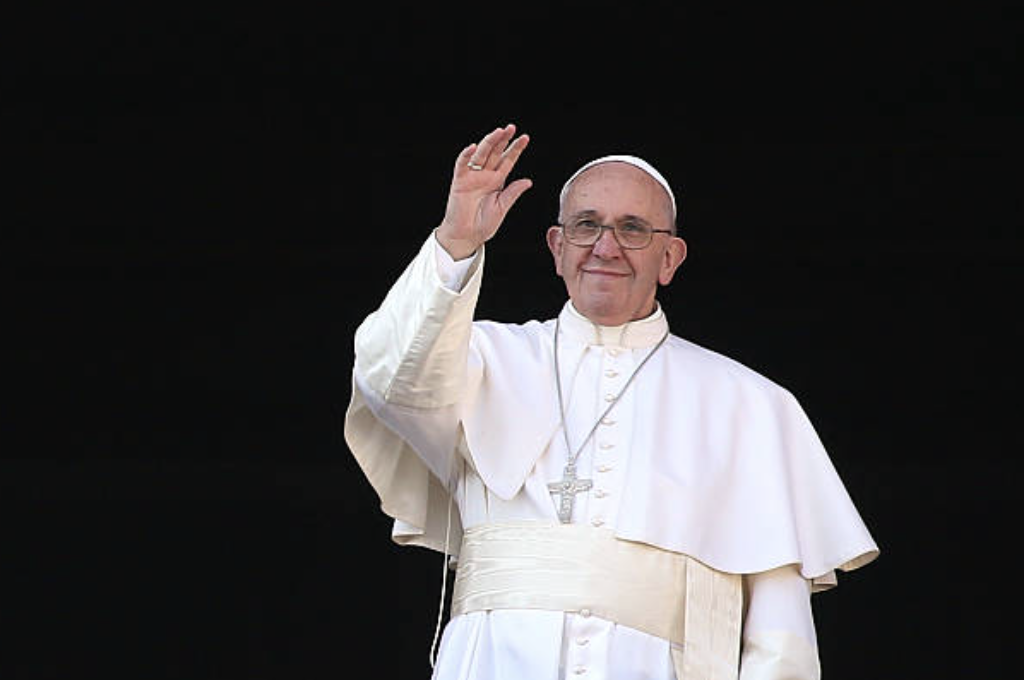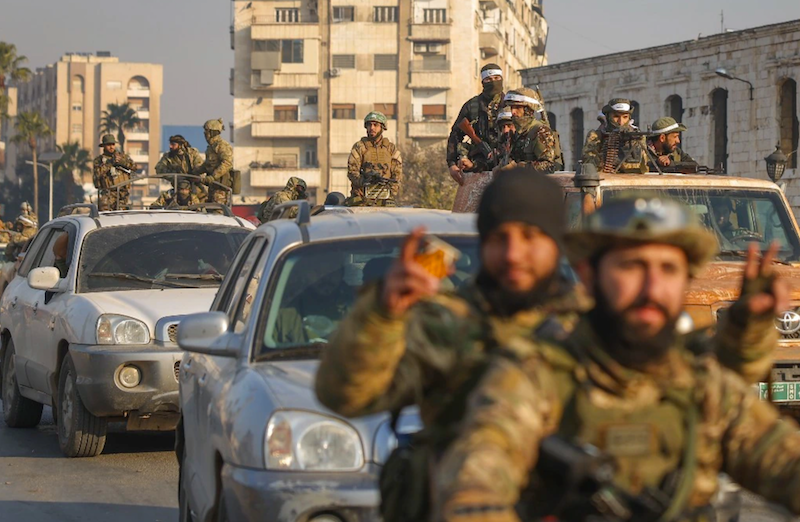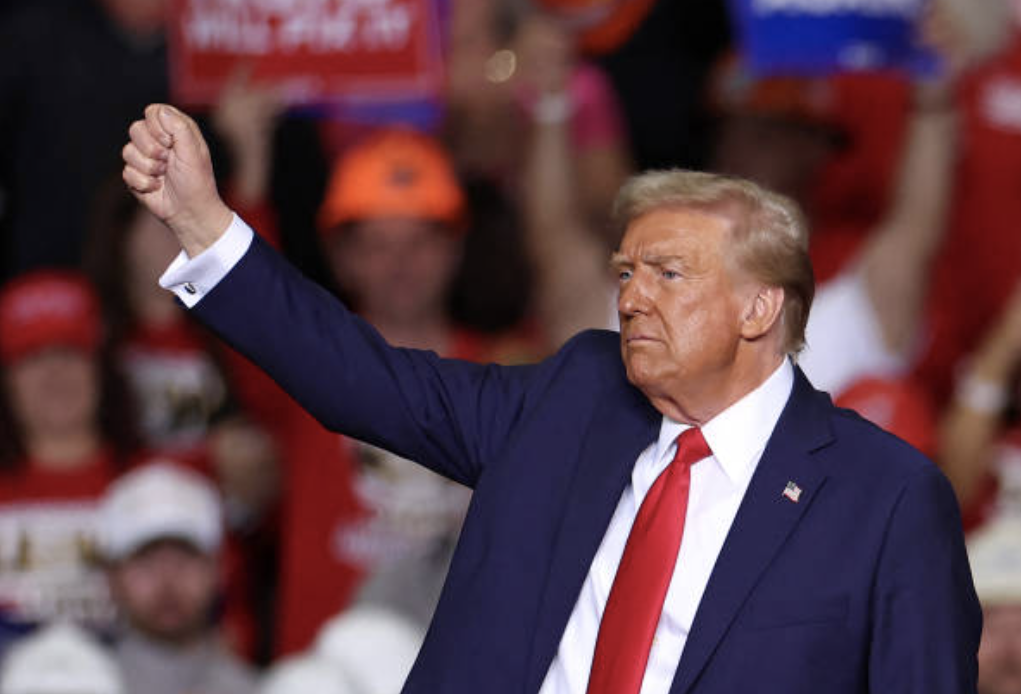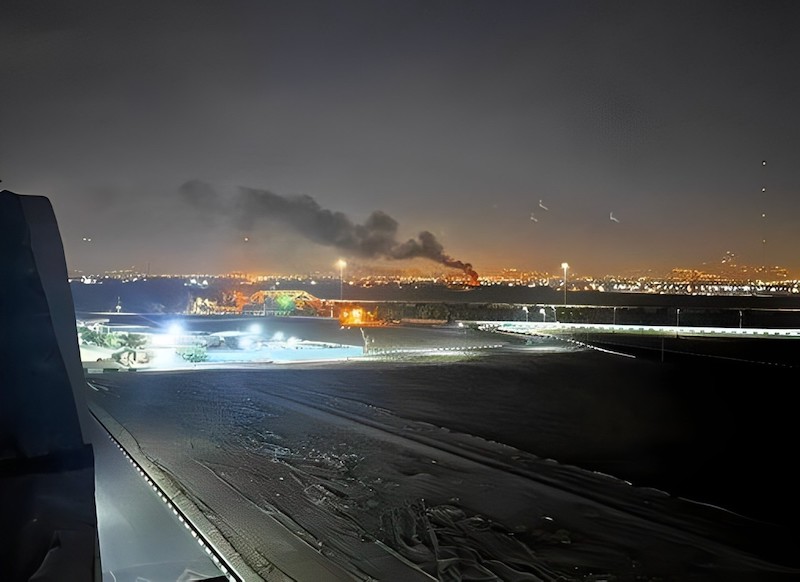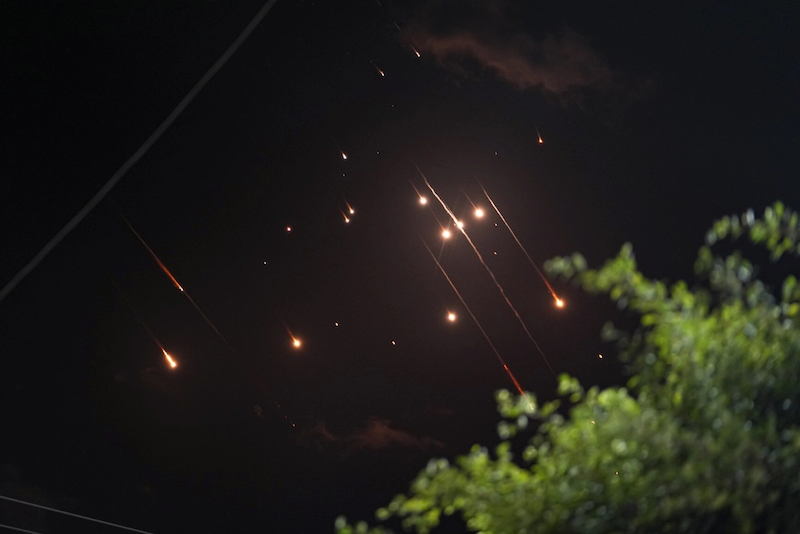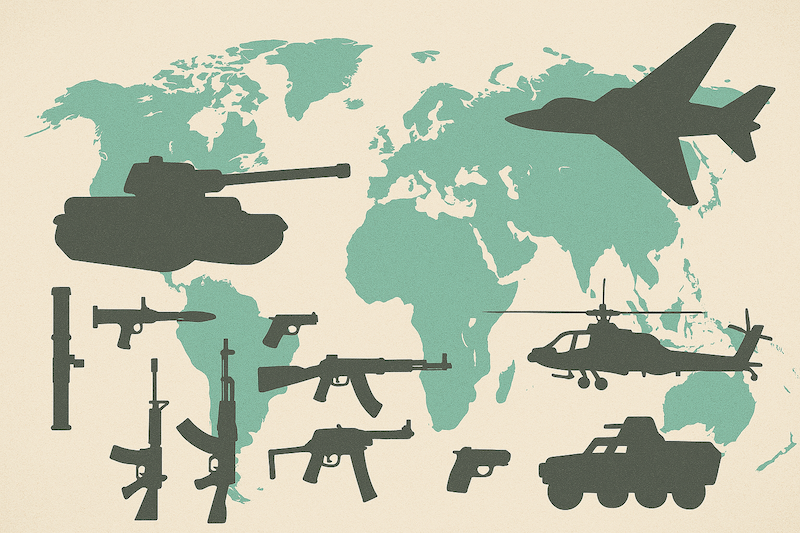 India Sentinels illustration for representation.
India Sentinels illustration for representation.
New Delhi: Ukraine has emerged as the world’s largest importer of arms, according to the latest report [pdf] from the Stockholm International Peace Research Institute (Sipri). The surge in arms imports by Ukraine, which rose nearly 100-fold compared to the previous five-year period, reflects the massive international military support in response to Russia’s “special military operation” in February 2022.
The Sipri Fact Sheet on “Trends in International Arms Transfers, 2024,” released in March 2025, provides a comprehensive analysis of global arms trade patterns over the five-year period from 2020 to 2024. The report reveals that while the global volume of international arms transfers remained almost unchanged (–0.6 per cent) compared to 2015–19, there were significant shifts in regional patterns.
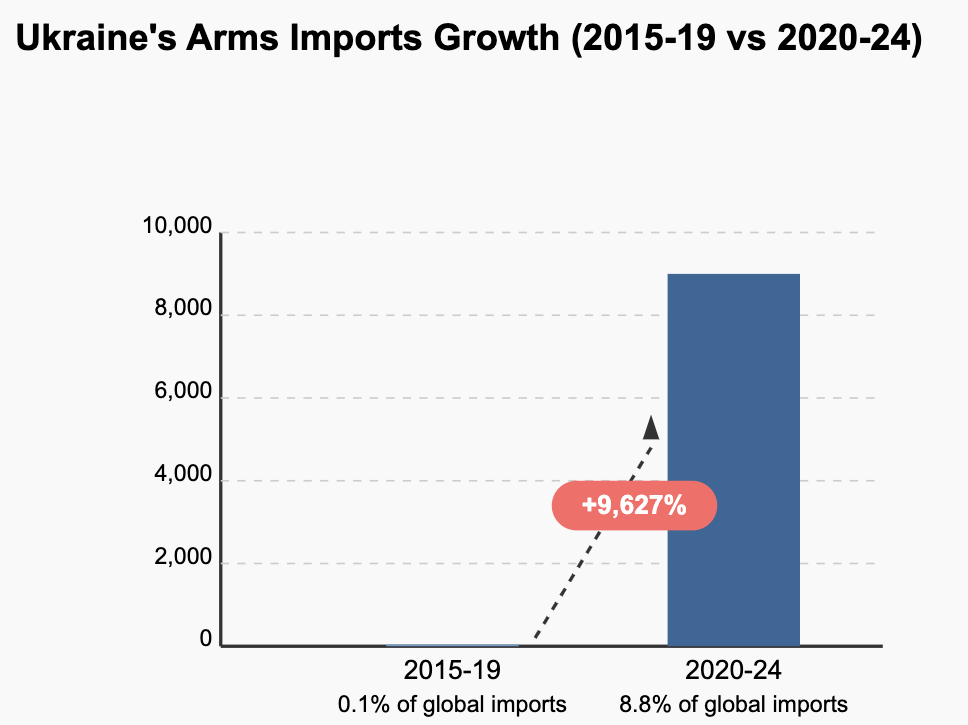
“Ukraine received 8.8 per cent of global arms imports in 2020-24, making it the largest arms importer in Europe and the world,” said Dr Mathew George, director of the Sipri Arms Transfers Programme. “Since the Russian invasion in February 2022, at least 35 states have supplied major arms to Ukraine, in most cases as aid.”
Most of Ukraine’s arms imports came from the United States (45 per cent), followed by Germany (12 per cent) and Poland (11 per cent). The report notes that in 2024, Ukraine’s ability to strike at longer range increased as several countries supplied long-range missiles and aircraft, with some allowing Ukraine to use these weapons to attack targets on Russian territory.
Global Arms Trade Patterns
The five largest arms exporters in 2020-24 were the United States, France, Russia, China, and Germany, collectively accounting for 72 per cent of all global arms exports. The United States maintained its position as the world’s leading arms supplier, increasing its exports by 21 per cent between 2015-19 and 2020-24, and expanding its global market share from 35 per cent to 43 per cent.
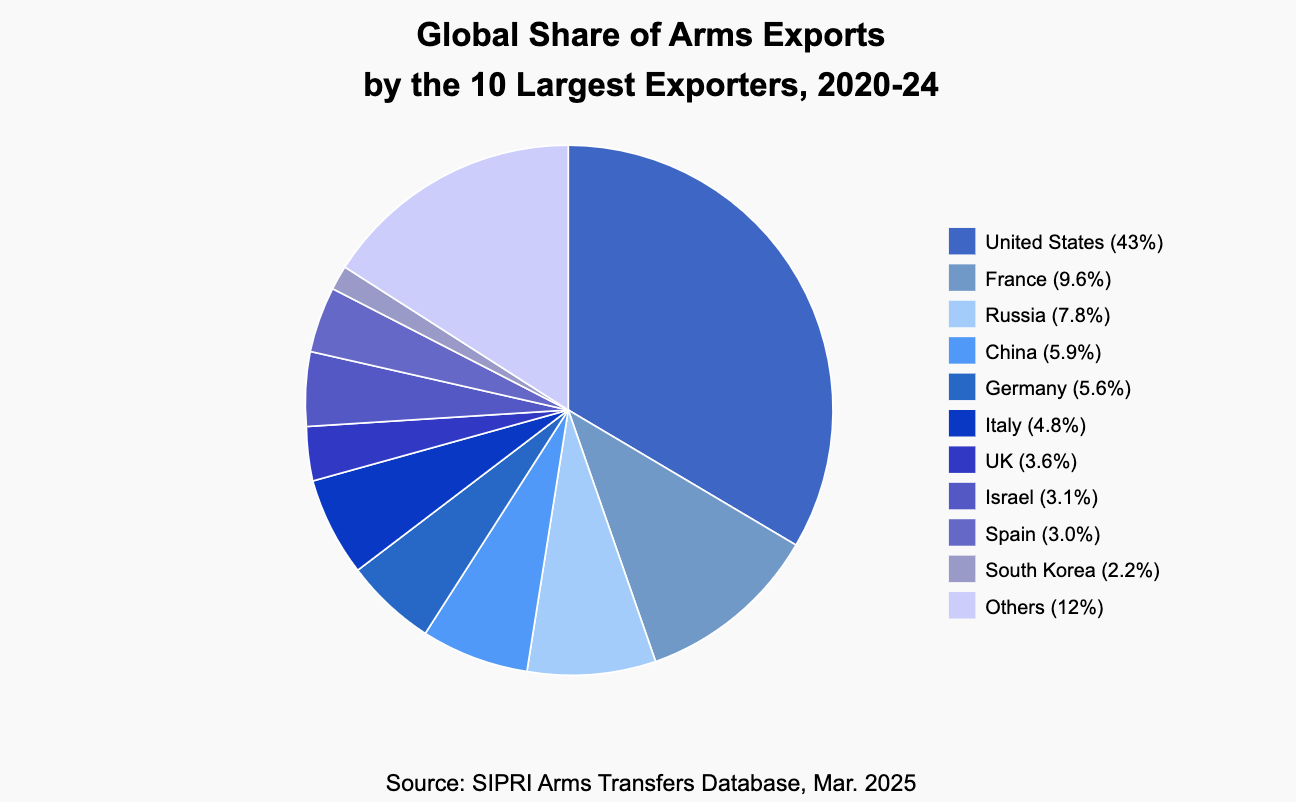
Russia, previously the world’s second-largest arms exporter, saw a dramatic 64 per cent decrease in its arms exports during the same period, dropping to third place behind France. This decline began before Russia’s special military operation in Ukraine in 2022 and is attributed to decreased orders from China and India, Russia’s prioritization of domestic arms production for its own military, international sanctions, and increased pressure from the US and its allies on potential buyers.
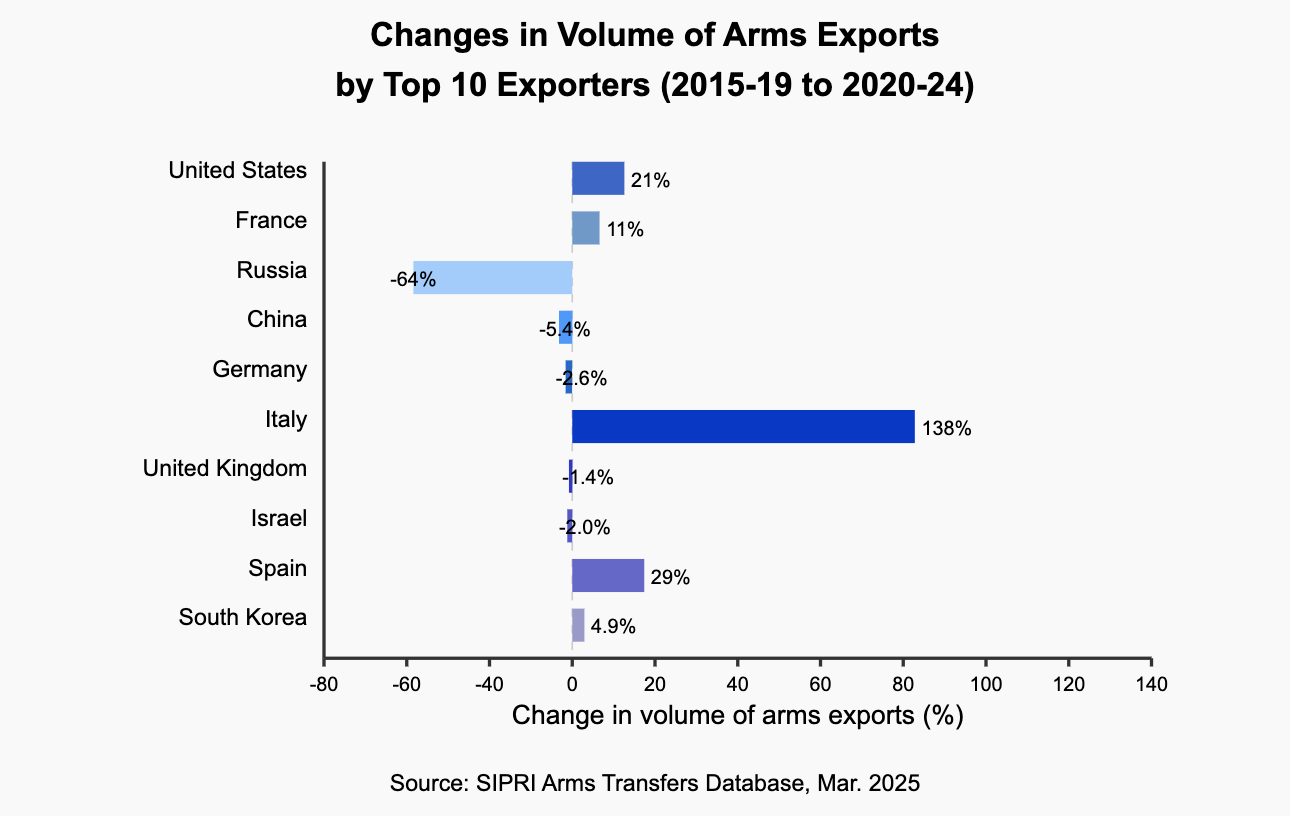
The report highlights that the US and Western European countries together accounted for 73 per cent of all arms exports in 2020–24, up from 61 per cent in 2015–19.
India’s Changing Arms Import Strategy
India remained a significant player in the global arms market, ranking as the world’s second-largest arms importer in 2020–24 with an 8.3 per cent share of global imports. However, Indian arms imports decreased by 9.3 per cent between 2015–19 and 2020–24, partly due to the country’s increasing ability to design and produce its own weapons.
A notable trend in India’s arms procurement is its shifting supply relationships. While Russia remained India’s largest arms supplier in 2020–24 (accounting for 36 per cent of Indian arms imports), this represents a significant decrease from previous periods (55 per cent in 2015–19 and 72 per cent in 2010–14).
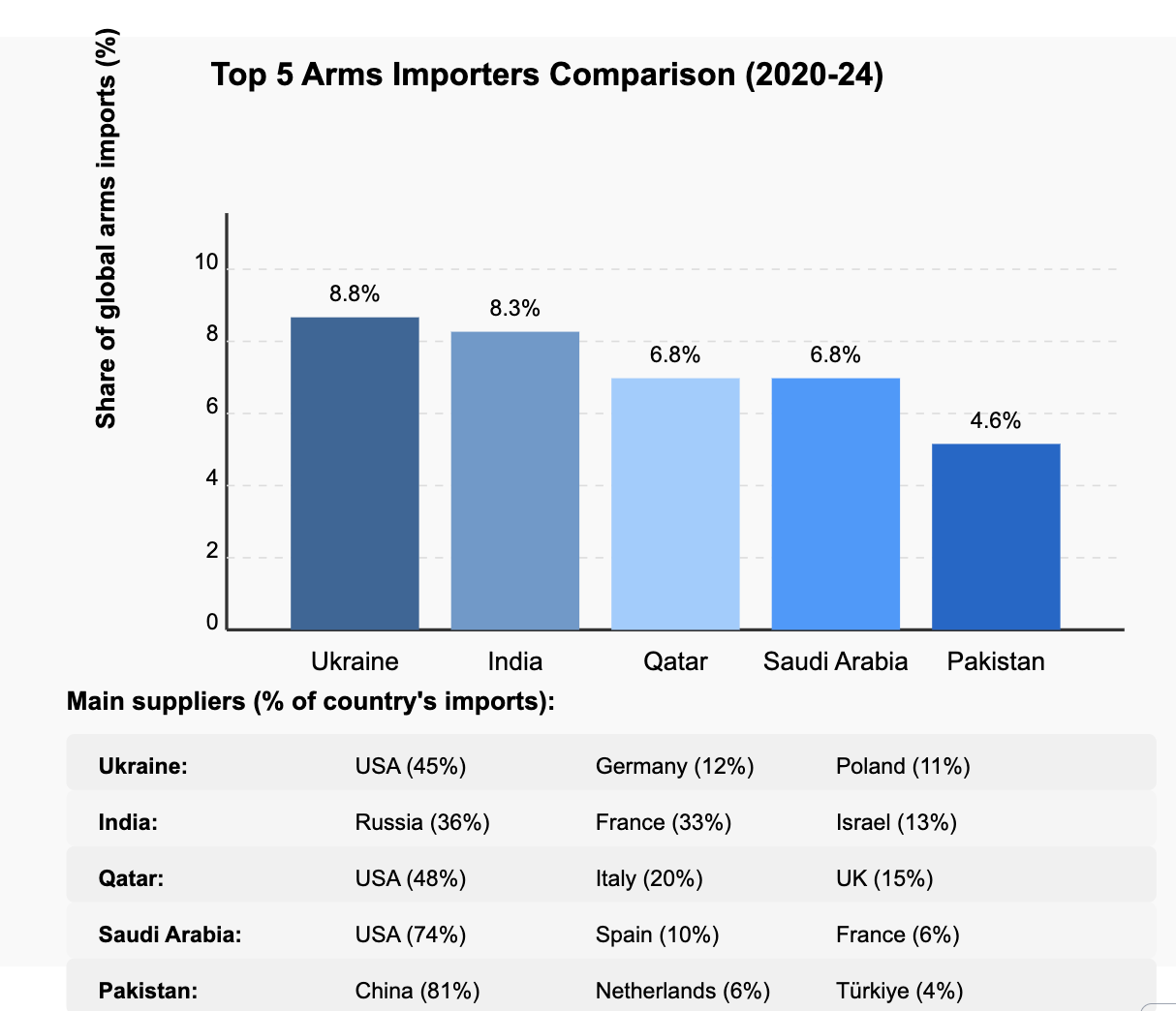
“India is shifting its arms-supply relations towards western suppliers, most notably France, Israel and the United States,” the report states. This shift is also evident in India’s new and planned orders for major arms, most of which will come from western suppliers despite public declarations from both sides that relations between India and Russia remain friendly.
France was India’s second-largest arms supplier, accounting for 33 per cent of its imports, followed by Israel at 13 per cent.
Regional Trends
The report identifies significant regional variations in arms imports:
* States in Asia and Oceania remained the largest importers, accounting for 33 per cent of global arms imports, though this represents a 21 per cent decrease compared to 2015–19.
* European imports increased dramatically by 155 per cent, driven largely by Ukraine’s massive arms acquisitions.
* Middle Eastern imports decreased by 20 per cent, though the region still accounts for 27 per cent of global arms imports.
* African imports fell by 44 per cent, with notable decreases in Algeria and Morocco.
* The Americas saw a modest increase of 13 per cent in arms imports.
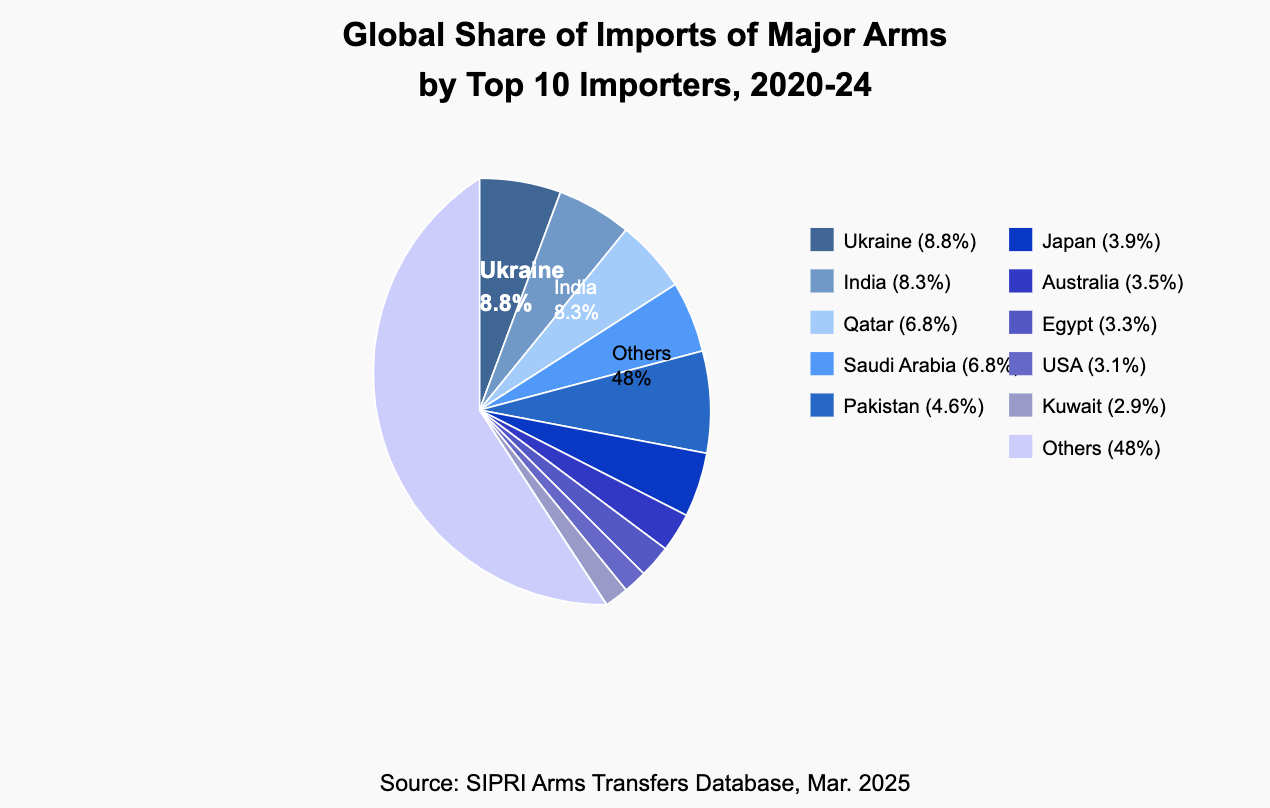
The report also highlights the impact of rising tensions around the world on arms procurement. The USA accounted for 64 per cent of arms imports by European Nato states in 2020–24, significantly higher than in 2015–19 (52 per cent), despite calls from European Nato members to reduce their dependence on American arms and strengthen Europe’s own arms industry.
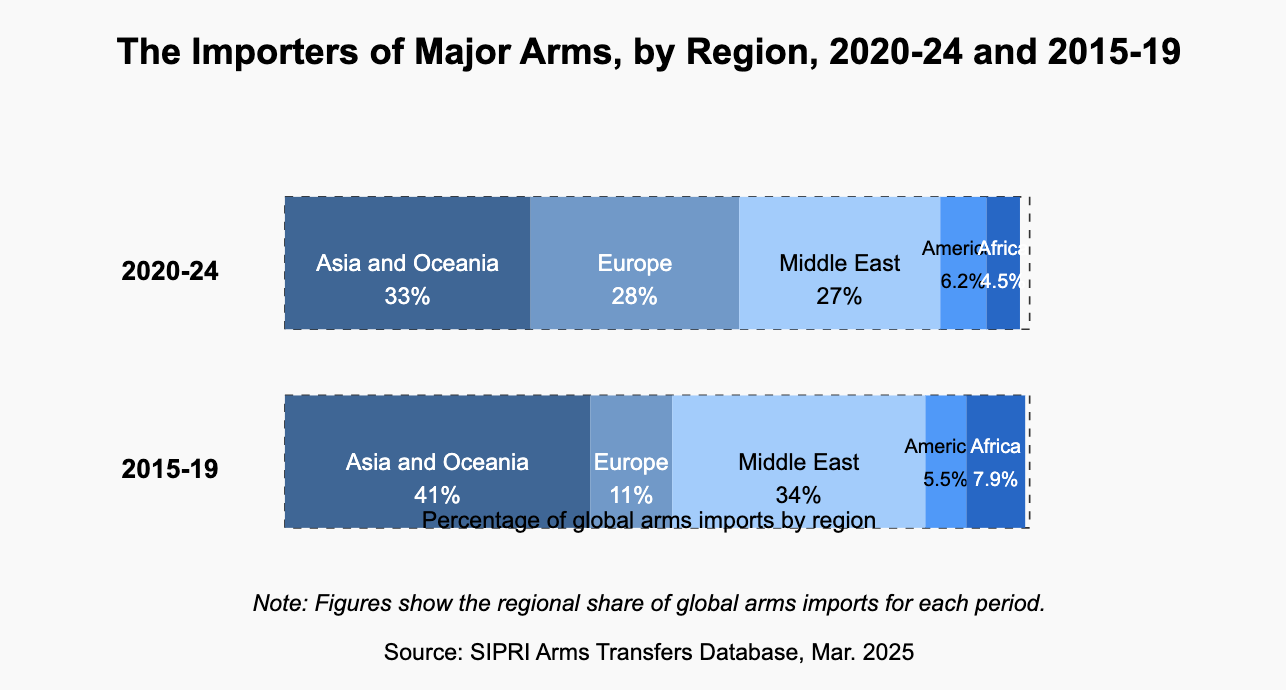
In the Middle East, Qatar’s arms imports increased by 127 per cent between 2015-19 and 2020-24, making it the third-largest arms importer globally, while Saudi Arabia’s imports decreased by 41 per cent, dropping from first to fourth place.
“The deeply rooted arms-supply relationship between the USA and European Nato states is visible in the large number of pending deliveries,” notes the report, including 472 combat aircraft and 150 combat helicopters on order with the USA as of the end of 2024.
The Sipri Arms Transfers Database, updated with data for 1950–2024, remains the only public resource providing consistent information on all international transfers of major arms since 1950, contributing to understanding the effects of arms flows on peace, stability, and conflict.

